When I first saw photos of Salar de Uyuni (Uyuni salt flats) years ago, I immediately put it on my travel list. I couldn’t believe it was a real place. The salt flats were one of my top priorities when I created a rough plan for my trip to South America.
Tupiza is a popular starting point for salt flats tours, and I stopped by a few tour offices to compare itineraries and prices. Three other travelers (a couple from Wales and Scotland and a British-French guy) from my hostel and I ended up booking a four-day, three-night tour with Natural Adventure.
Tupiza is a nice town to relax in and stock up on supplies (toilet paper!). As my tour group shopped for souvenirs, we met an adorable eight-week-old puppy who refused to stay still for photos.
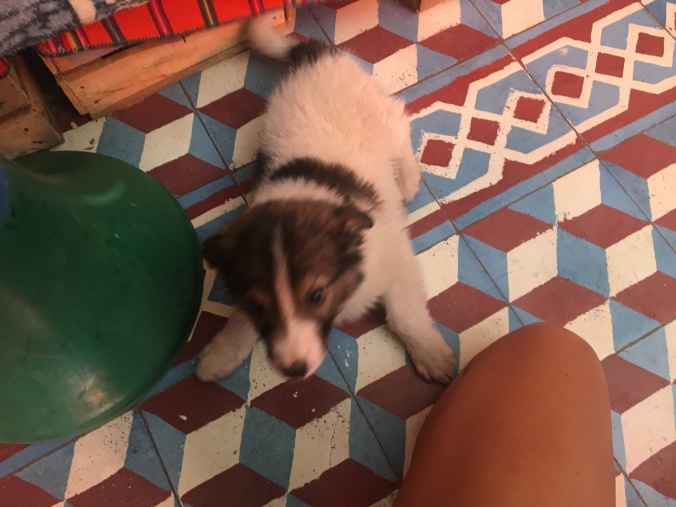
Can I keep him?
If you go on a tour starting from Tupiza, you’ll spend a lot of time in a jeep on your first day. I felt so sorry for our guide Milton, who had to get up before dawn to pick us up at 6 AM. He didn’t get a break until we finished the day well after 6 PM. He was also checking in on his wife, who had gotten sick the previous night. Milton was an incredible trooper, and we couldn’t have asked for a better guide.
While Milton was at the wheel, our group had the easy job of admiring the views.
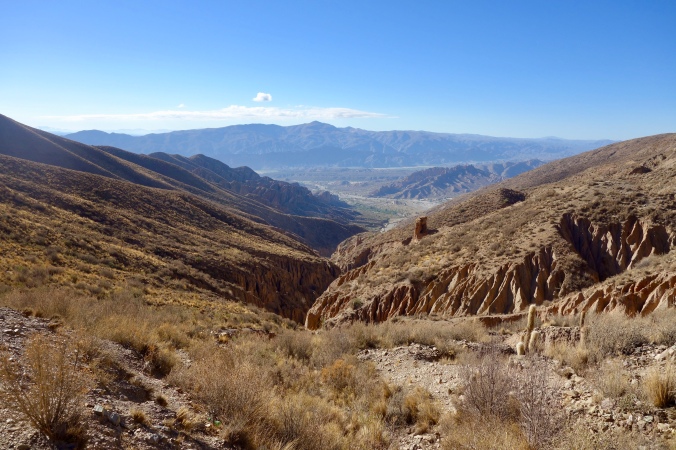
The start of our tour: just a taste of what would follow.
We stopped at Ciudad del Encanto, a group of rock formations.
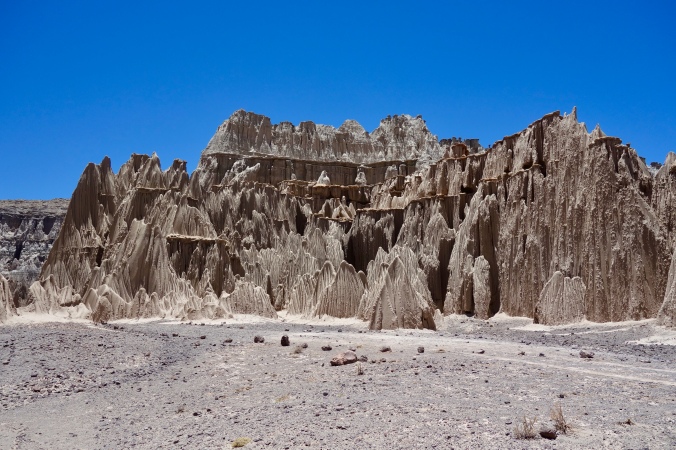
One of our last stops on the first day was San Antonio de Lipez, an abandoned mining town that’s rumored to be haunted by ghosts.
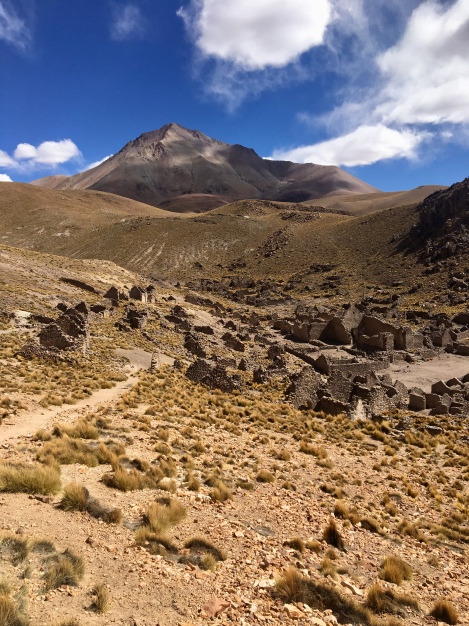
The next couple of days were packed with otherworldly sights. The area between Tupiza and Salar de Uyuni is ridiculously photogenic.

How often do you see views like this when driving at home? (Answer: never.)
Laguna Verde, colored with minerals, was one of the highlights of the tour.
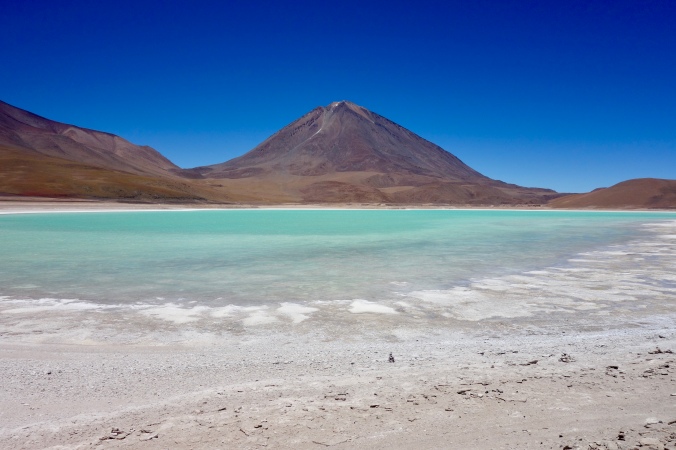
We stopped at Sol de la Mañana, a group of sulfur springs. Take one whiff of the air, and there’s no doubt that sulfur’s present. Watching the bubbling mud was hypnotic. If it weren’t for the smell, I would have loved to stay there for a couple of hours.
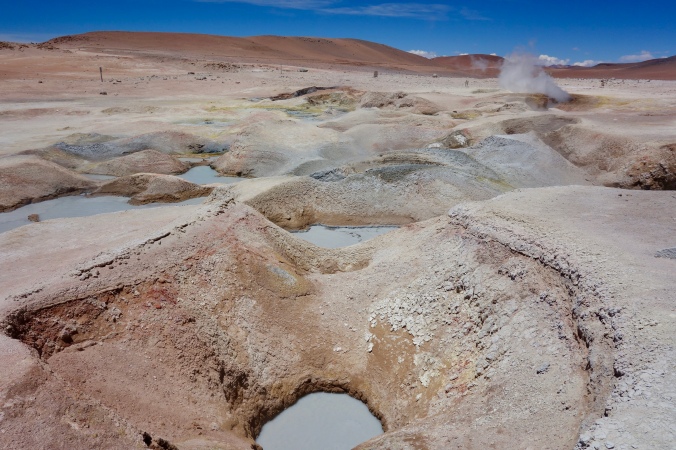
We saw flamingoes at Laguna Colorada, which was colored with borax, sediments, and algae.

As we walked by the lagoon, we were startled when we saw a number of dead flamingo chicks. Milton said many chicks froze to death during the winter due to their inability to fly.
In contrast, Laguna Negra was a tranquil retreat, with some of the stillest water I’d seen.
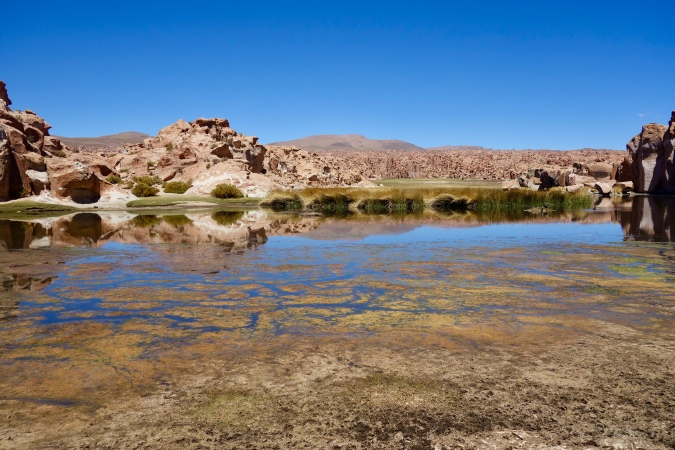
All of this built up to the end of our third day, when we got our first glimpse of the salt flats.

The salar is so flat that it plays tricks on your perception. We assumed we could take a quick drive to the mountains on the horizon, and couldn’t believe it when Milton told us they were about 80 kilometers away.
On our last day, we woke up early to catch sunrise on Incahuasi, a cactus island in the middle of the salt flats.
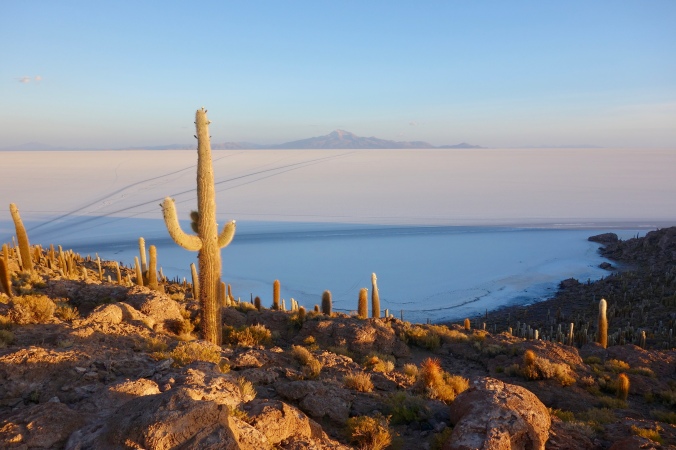
After breakfast, Milton took us to an unbroken stretch of salt.
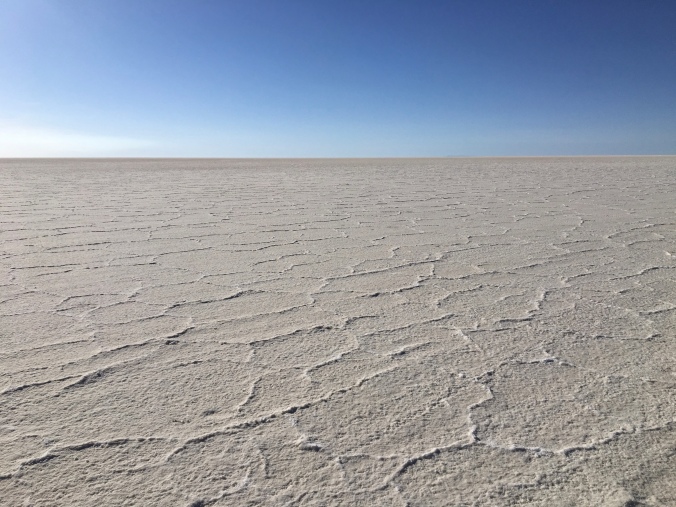
When salt is all you can see.
To take advantage of the flatness of the salar, many visitors like to take photos that play with perspective. I’m not clever, so I didn’t have great ideas for photos.
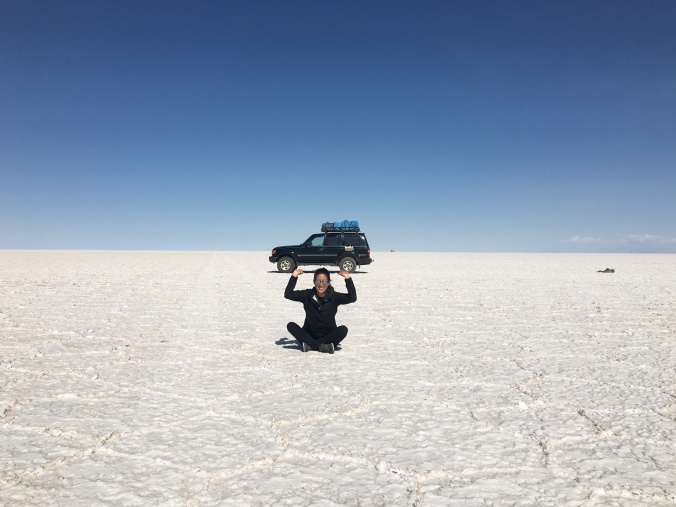
My “best” perspective shot
People more creative than I am are brilliant at coming up with perspective shots. If perspective shots are important to you, it’s worth doing some Internet searches for inspiration.
The salt flats tour was everything I hoped it would be. It was so tough to pick photos for this post, as I was constantly taking my camera out during the tour. If you visit Bolivia, Salar de Uyuni is a must.
Below are a few tips on booking a salt flats tour.
- The most important tip: if you aren’t pressed for time, book a tour from Tupiza rather than Uyuni. Tours starting from Tupiza are longer (four days rather than three), and you get to see more than if you start and end in Uyuni. Tours starting from Tupiza tend to have smaller groups, which is so important when you’re spending more than six hours a day in a jeep. Finally, sights and accommodations are less crowded on the Tupiza-Uyuni route since fewer travelers go this way.
- While the salt flats and the surrounding scenery are spectacular, the town of Uyuni is not. The streets are full of trash, and the town itself doesn’t contain notable attractions. I stayed in Uyuni for one night after my tour, but it was unnecessary. Milton actually tried to discourage me from staying in Uyuni and said I should spend as little time there as possible. Tupiza has more interesting surroundings and is a lot more charming than Uyuni.
- Starting/ending in Chile: if you want to visit both Bolivia and Chile, many Tupiza- and Uyuni-based companies offer tours that end in San Pedro de Atacama in Chile. It’s also possible to start a tour in San Pedro that ends in Uyuni or San Pedro.
- Shop around: Regardless of where you start your tour or which company you choose, the scenery is guaranteed to be amazing. Prices will be similar across tour companies, so it all comes down to fit. Don’t hesitate to shop around with multiple companies to see which one you feel most comfortable with.
- When I visited companies in Tupiza, Silvia at the Natural Adventure office was the only salesperson who cracked jokes with my group. Her warm personality was a deciding factor in booking our tour–clearly, she was great at her job. As I mentioned, our guide Milton was wonderful and really made our experience. He was a one-man show, driving, DJing, serving our meals, and taking photos. Even though he must have been exhausted, he had an infectious laugh and remained cheerful throughout our whole tour.
- Rainy season: rain is a downer in most travel destinations but not at Salar de Uyuni. In fact, some travelers specifically visit Salar de Uyuni during the rainy season (December to March) to witness the salt flats’ amazing mirror effect.
Salt flats look amazing, Alice! Missing you!
LikeLike